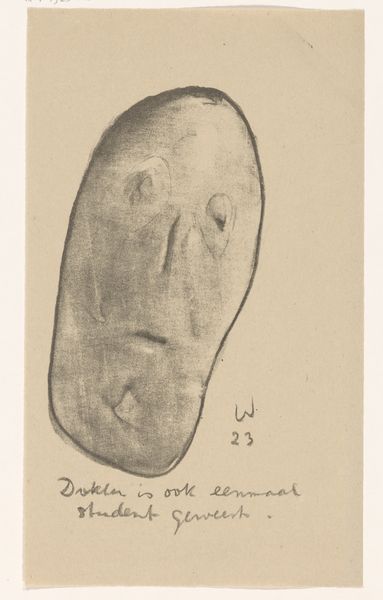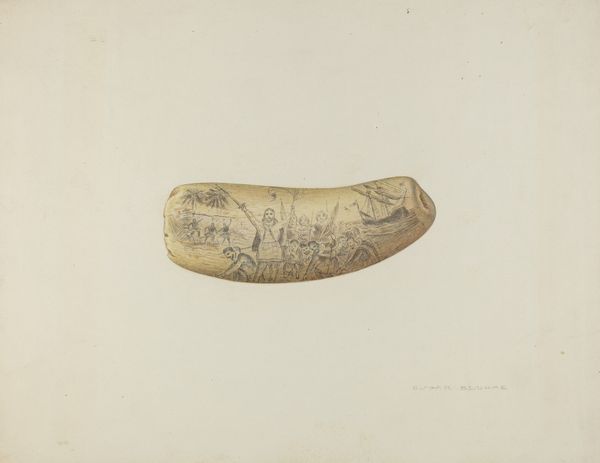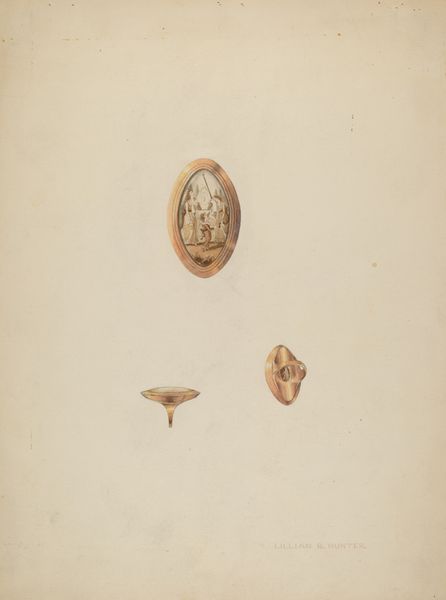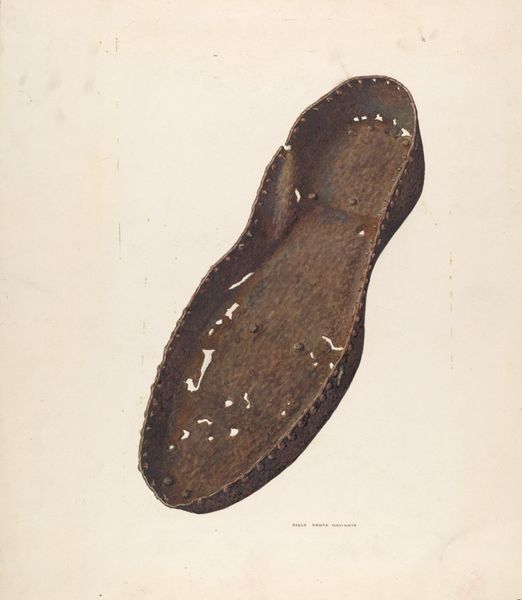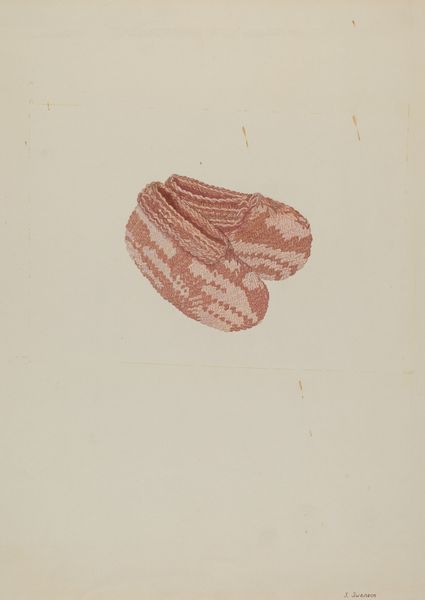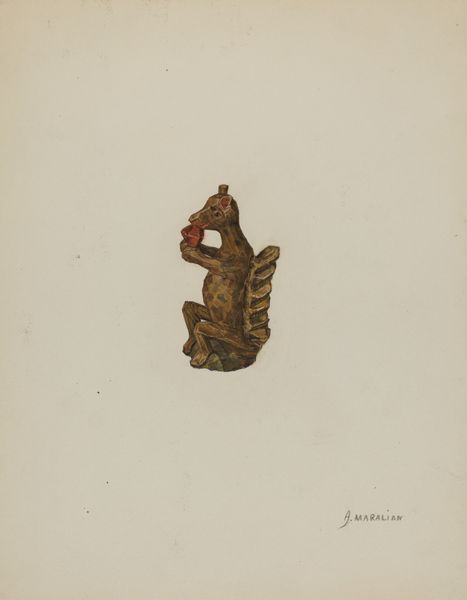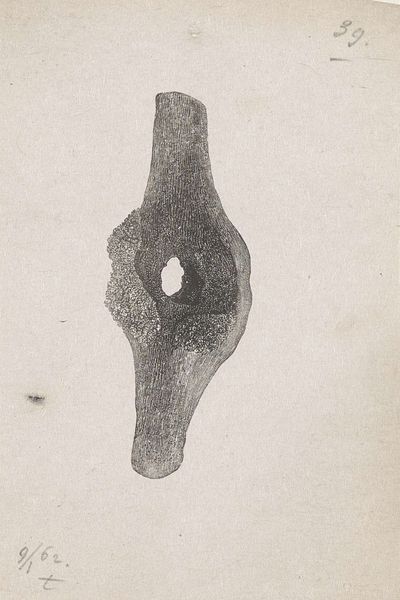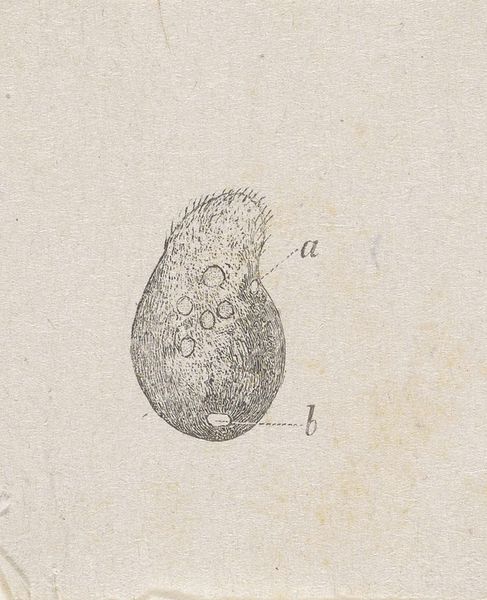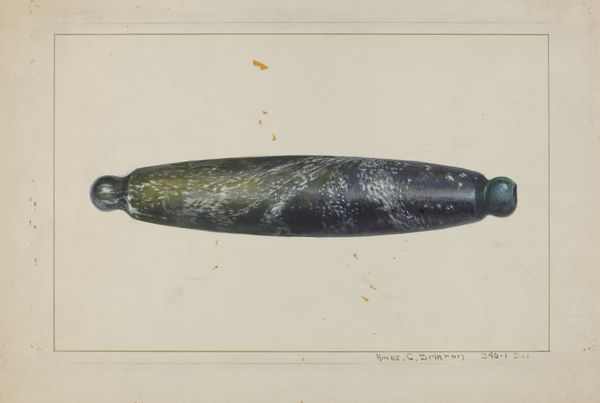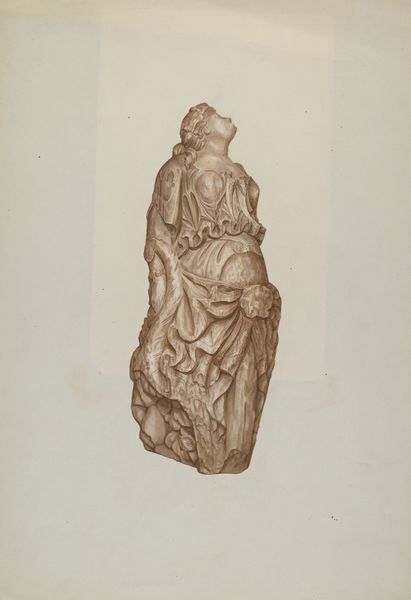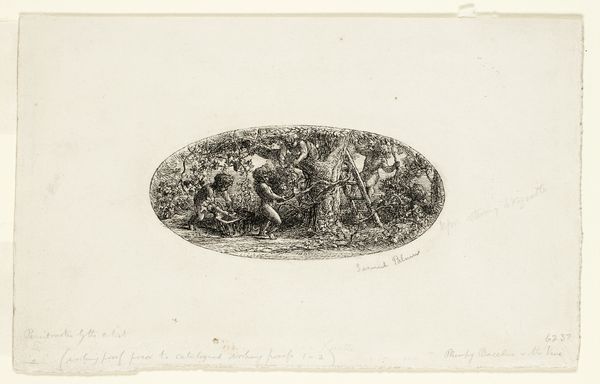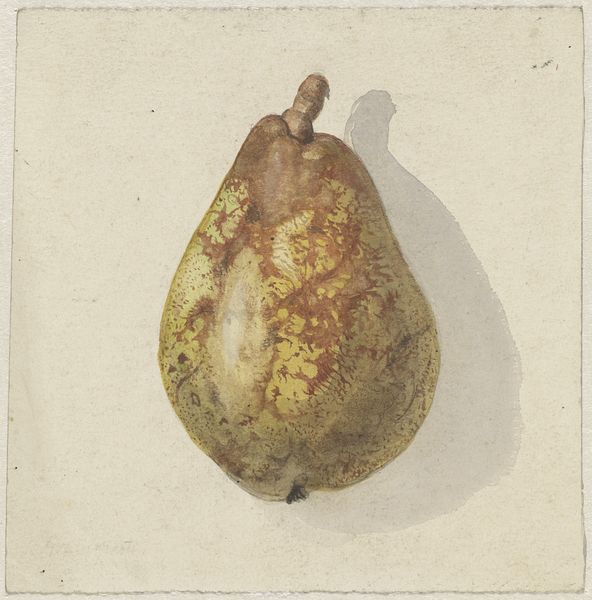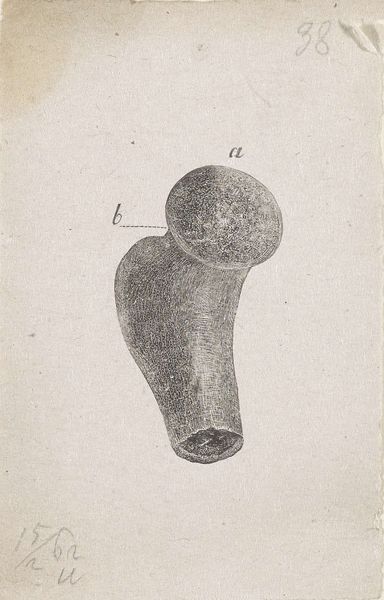
drawing, paper, watercolor, ink
#
portrait
#
pencil drawn
#
drawing
#
paper
#
watercolor
#
ink
#
pencil drawing
#
watercolour illustration
#
watercolor
#
realism
Dimensions: height 660 mm, width 480 mm, height 278 mm, width 181 mm, height mm, width mm
Copyright: Rijks Museum: Open Domain
Curator: Well, that's certainly... organic looking. Reminds me a bit of a strange pear, or perhaps a…well, never mind. Editor: Indeed. What we have here is Robert Jacob Gordon’s "Hydnora africana Thunb., bulb (Jackal-food plant)," a watercolor, ink, and pencil drawing on paper, created sometime between 1777 and 1786. Gordon, of course, was a Dutch military officer, explorer, and naturalist. Curator: Naturalist first, perhaps, given the incredibly detailed texture he renders here. Notice the contrast between the smoother surfaces and the almost pustular patterning across the bulb. What strikes me is how much the composition foregrounds this unusual growth. Editor: It speaks volumes, doesn't it? This wasn’t merely botanical documentation; these drawings by Gordon show his participation in shaping imperial knowledge, contributing to scientific understanding in a time when European powers sought to categorize and control the natural world. The Hydnora africana, indigenous to Southern Africa, was now placed within a Western system of taxonomy. Curator: I see your point, and perhaps that’s what makes it a “portrait”—as some categorizations suggest—but formally, it’s the attention to line, the incredibly subtle shifts in color from greens to browns, and the strategic use of white to suggest highlights, that arrest my gaze. It’s a powerful illustration, independent of its socio-political baggage. Editor: I won't disagree. But the fact it was a colonial project changes the dynamics and should change how it is regarded and engaged with. These beautiful images served, undeniably, in expanding Europe's economic and political influence over the territories explored. It also opens up considerations on whose voices and perspectives have been historically silenced. Curator: An interesting perspective. Ultimately, Gordon presents us with an object of peculiar beauty, provoking a kind of awe. I appreciate how we’re both, perhaps despite ourselves, compelled to see it through different, equally valid, lenses. Editor: Precisely. It highlights how intertwined history, observation, and artistic representation can be, offering us many rich perspectives to draw from.
Comments
No comments
Be the first to comment and join the conversation on the ultimate creative platform.
